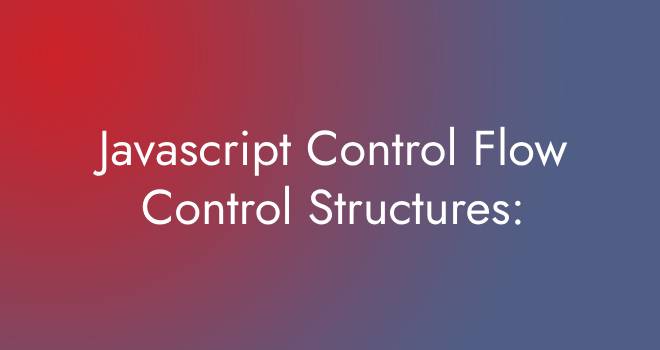Other control flow structures, like the break statement, the continue statement, and the return statement within functions, allow you to manage the flow of execution within loops and functions.
JavaScript control flow structures enable you to implement logic that can guide your program through different scenarios and conditions. This is essential for creating interactive web pages, processing data, and performing a wide range of tasks.
Here the list
1. Break Statement:
2. Continue Statement
3. Return Statement
1. Break Statement:
The break statement is used to exit a loop prematurely before the loop’s normal termination condition is met. It’s often used when you want to terminate a loop based on a specific condition.
for (let i = 0; i < 10; i++) {
if (i === 5) {
break; // Exit the loop when i is 5
}
console.log(i);
}2. Continue Statement:
The continue statement is used to skip the current iteration of a loop and move on to the next iteration. It’s useful when you want to skip a specific iteration based on a condition.
for (let i = 0; i < 5; i++) {
if (i === 2) {
continue; // Skip the iteration when i is 2
}
console.log(i);
}3. Return Statement:
In JavaScript functions, the return statement is used to exit the function and provide a value back to the caller. When the return statement is encountered, the function immediately stops executing and returns the specified value.
function add(a, b) {
return a + b;
}
const result = add(3, 5);
console.log(result); // Outputs: 8break: Terminates a loop prematurely.
continue: Skips the current iteration and moves to the next iteration of a loop.
return: Exits a function and returns a value to the caller.
These control structures help you manage the flow of execution within your loops and functions, allowing you to handle various scenarios and conditions more effectively.

